Seismic Design Procedure for Low-Rise Cold-Formed Steel–Special Bolted Moment Frames
Abstract
1. Introduction
2. Proposed Bolted Connection for CFS-SBMFs
2.1. Connection Details
2.2. Proposed Connection Design Procedure
- Flexural strength required for the beam:
- 2.
- Hierarchy criterion:
- 3.
- Connecting plate thickness:
- 4.
- Weld strength of the connecting plate:
- 5.
- Panel zone strength:
3. Full-Scale Testing Program
4. Test Results
4.1. Global Responses
4.2. Components of Column Tip Displacement
4.3. Mathematical Prediction of the Bolted Connections’ Behaviour
5. Nonlinear Analysis
5.1. Archetype Frames
5.2. Pushover Analysis and Dynamic Analysis
5.2.1. Pushover Analysis
5.2.2. Dynamic Analysis
5.3. Evaluation of the Proposed Structural System
6. Conclusions
Author Contributions
Funding
Institutional Review Board Statement
Informed Consent Statement
Data Availability Statement
Conflicts of Interest
Appendix A
| ID No. | Earthquake | Recording Station | |||
|---|---|---|---|---|---|
| M | Year | Name | Name | Owner | |
| 1 | 6.7 | 1994 | Northridge | Beverly Hills—Mulhol | USC |
| 2 | 6.7 | 1994 | Northridge | Canyon Country-WLC | USC |
| 3 | 7.1 | 1999 | Duzce, Turkey | Bolu | ERD |
| 4 | 7.1 | 1999 | Hector Mine | Hector | SCSN |
| 5 | 6.5 | 1979 | Imperial Valley | Delta | UNAMUCSD |
| 6 | 6.5 | 1979 | Imperial Valley | El Centro Array #11 | USGS |
| 7 | 6.9 | 1995 | Kobe, Japan | Nishi-Akashi | CUE |
| 8 | 6.9 | 1995 | Kobe, Japan | Shin-Osaka | CUE |
| 9 | 7.5 | 1999 | Kocaeli, Turkey | Duzce | ERD |
| 10 | 7.5 | 1999 | Kocaeli, Turkey | Arcelik | KOERI |
| 11 | 7.3 | 1992 | Landers | Yermo Fire Station | CDMG |
| 12 | 7.3 | 1992 | Landers | Coolwater | SCE |
| 13 | 6.9 | 1989 | Loma Prieta | Capitola | CDMG |
| 14 | 6.9 | 1989 | Loma Prieta | Gilroy Array #3 | CDMG |
| 15 | 7.4 | 1990 | Manjil, Iran | Abbar | BHRC |
| 16 | 6.5 | 1987 | Superstition Hills | El Centro Imp. Co. | CDMG |
| 17 | 6.5 | 1987 | Superstition Hills | Poe Road (temp) | USGS |
| 18 | 7.0 | 1992 | Cape Mendocino | Rio Dell Overpass | CDMG |
| 19 | 7.6 | 1999 | Chi-Chi, Taiwan | CHY101 | CWB |
| 20 | 7.6 | 1999 | Chi-Chi, Taiwan | TCU045 | CWB |
| 21 | 6.6 | 1971 | San Fernando | LA—Hollywood Stor | CDMG |
| 22 | 6.5 | 1976 | Friuli, Italy | Tolmezzo | - |
References
- AISI S110; Standard for Seismic Design of Cold-Formed Steel Structural Systems—Special Bolted Moment Frames. American Iron and Steel Institute: Washington, DC, USA, 2007.
- ASCE/ACI 7-16; Minimum Design Loads for Buildings and Other Structures. American Society of Civil Engineering: Reston, VA, USA, 2016.
- Sato, A.; Uang, C.M. Seismic Design Procedure Developed for Cold-Formed Steel-Special Bolted Moment Frames. J. Constr. Steel Res. 2009, 65, 860–868. [Google Scholar] [CrossRef]
- Uang, C.M.; Sato, A.; Hong, J.K.; Wood, K. Cyclic Testing and Modeling of Cold-Formed Steel Special Bolted Moment Frame Connections. J. Struct. Eng. 2010, 138, 953–960. [Google Scholar] [CrossRef]
- Sato, A.; Uang, C.M. Seismic Performance Factors for Cold-Formed Steel Special Bolted Moment Frames. J. Struct. Eng. 2010, 138, 961–967. [Google Scholar] [CrossRef]
- Sabbagh, A.B.; Petkovski, M.; Pilakoutas, K.; Mirghaderi, R. Ductile Moment-Resisting Frames using Cold-Formed Steel Section: An Analytical Investigation. J. Constr. Steel Res. 2011, 67, 634–646. [Google Scholar] [CrossRef]
- Sabbagh, A.B.; Petkovski, M.; Pilakoutas, K.; Mirghaderi, R. Development of Cold-Formed Steel Elements for Earthquake Resistant Moment Frame Buildings. Thin-Walled Struct. 2012, 53, 99–108. [Google Scholar] [CrossRef]
- Sabbagh, A.B.; Petkovski, M.; Pilakoutas, K.; Mirghaderi, R. Cyclic Behaviour of Bolted Cold-Formed Steel Moment Connections: FE modelling including slip. J. Constr. Steel Res. 2013, 80, 100–108. [Google Scholar] [CrossRef]
- Serror, M.H.; Hassan, E.; Mourad, S.A. Experimental Study on the Rotation Capacity of Cold-Formed Steel Beams. J. Constr. Steel Res. 2016, 121, 84–97. [Google Scholar] [CrossRef]
- Hassan, E.; Serror, M.H.; Mourad, S.A. Numerical Prediction of Available Rotation Capacity of Cold-Formed Steel Beams. J. Constr. Steel Res. 2017, 128, 216–228. [Google Scholar] [CrossRef]
- Caldernoi, B.; Martino, A.D.; Formisano, A.; Fiorino, L. Cold Formed Steel Beams under Monotonic and Cyclic Loading: Experimental Investigation. J. Constr. Steel Res. 2009, 65, 219–227. [Google Scholar] [CrossRef]
- Dubina, D. Behavior and Performance of Cold-Formed Steel-Framed Houses under Seismic Action. J. Constr. Steel Res. 2008, 64, 896–913. [Google Scholar] [CrossRef]
- FEMA P695; Qualification of Building Seismic Performance Factors. Federal Emergency Management Agency: Washinton, DC, USA, 2009.
- Sato, A.; Uang, C.M. A FEMA P695 Study for the Proposed Seismic Performance Factors for Cold-Formed Steel Special Bolted Moment Frames. Earthq. Spectra 2013, 29, 259–282. [Google Scholar] [CrossRef]
- ANSI/AISC 360; Specification of Structural Steel Buildings. American Institute of Steel Construction: Chicago, IL, USA, 2022.
- ANSI/AISC 341; Seismic Provisions for Structural Steel Buildings. American Institute of Steel Construction: Chicago, IL, USA, 2022.
- FEMA-350; Recommended Seismic Design Criteria for New Steel Moment Frame Buildings. Federal Emergency Management Agency: Washington, DC, USA, 2000.
- Montouri, R.; Nastri, E.; Piluso, V. Advances in Theory of Plastic Mechanism Control: Closed Form Solution for MR-Frames. Earthq. Eng. Struct. Dyn. 2015, 44, 1035–1054. [Google Scholar] [CrossRef]
- OpenSees. Available online: https://opensees.berkeley.edu (accessed on 3 August 2015).
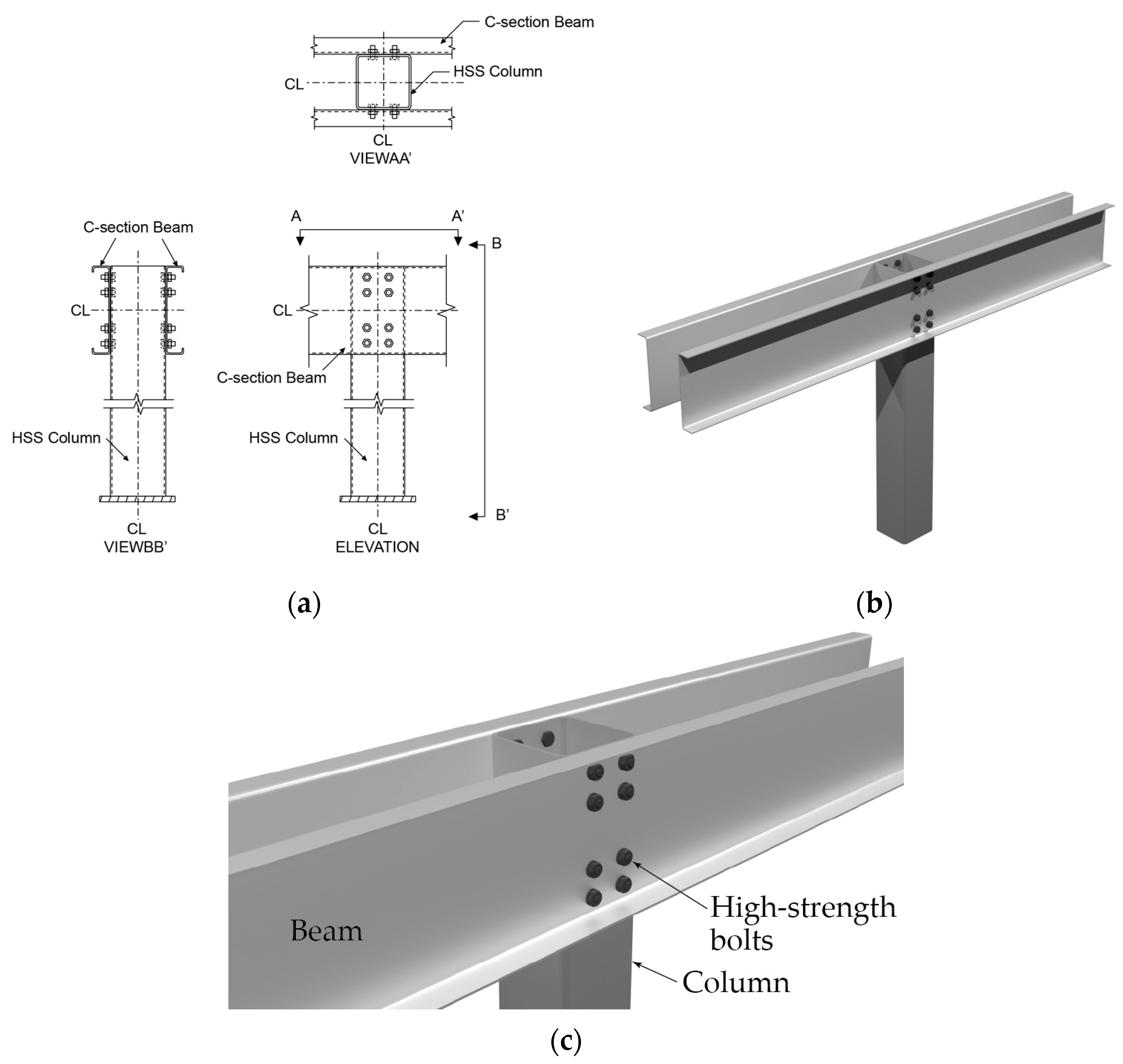

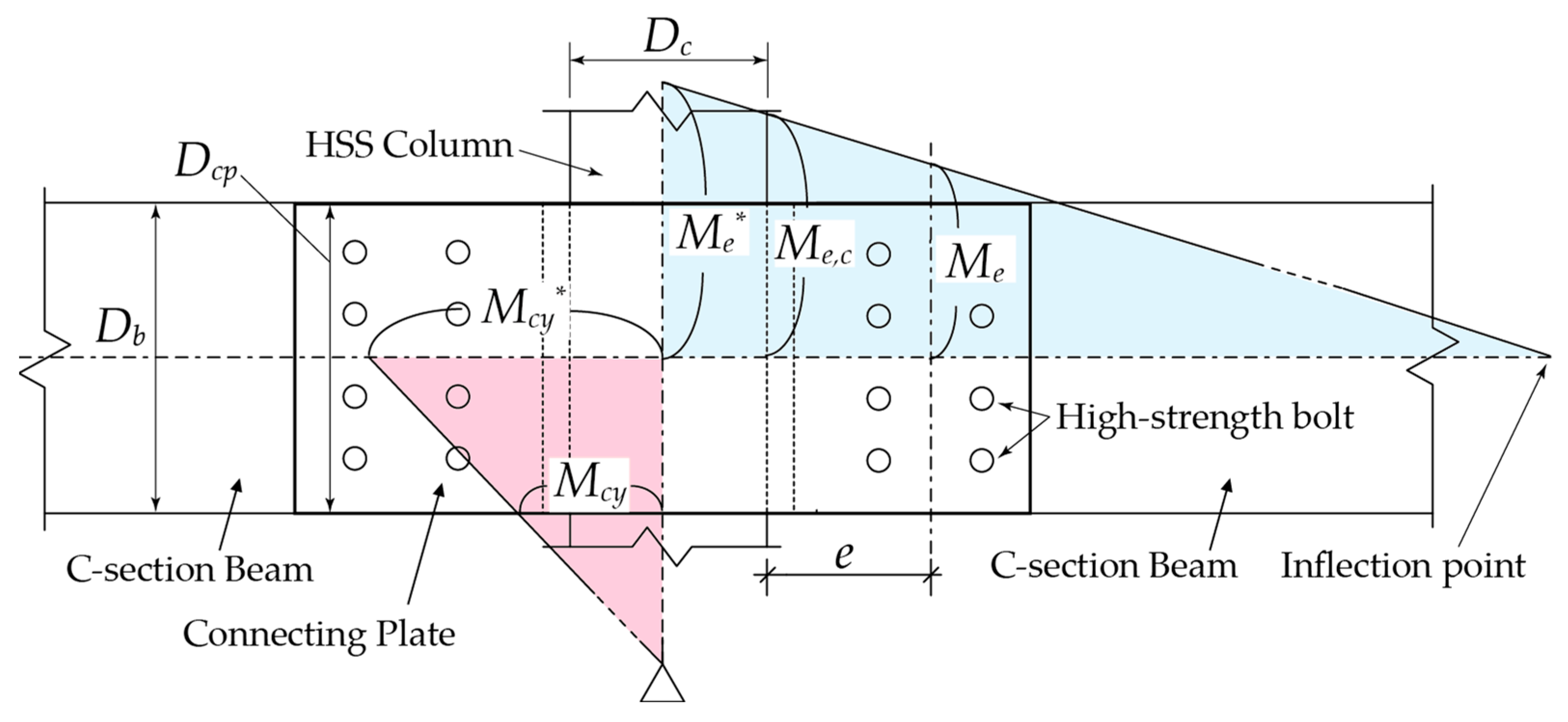


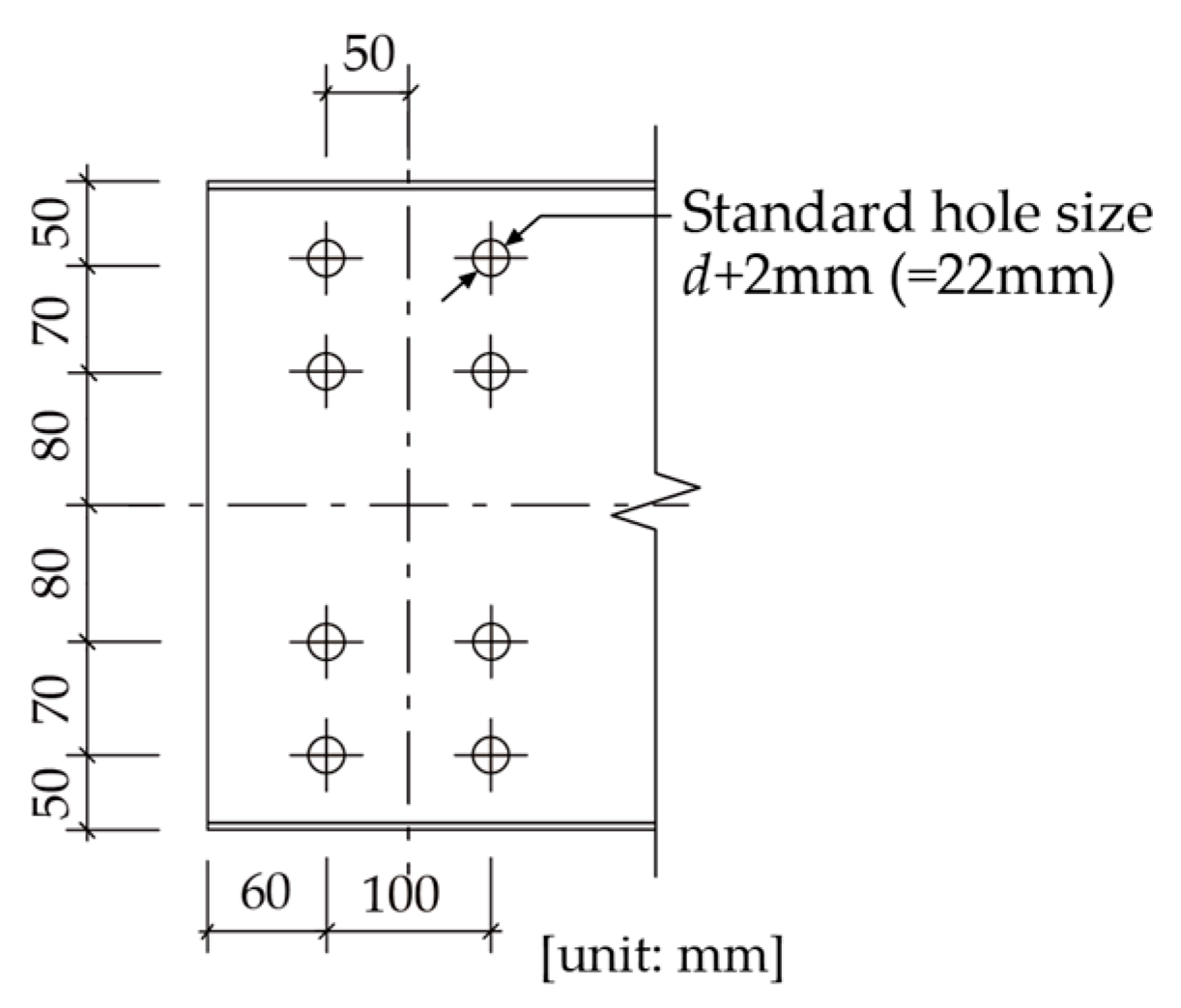


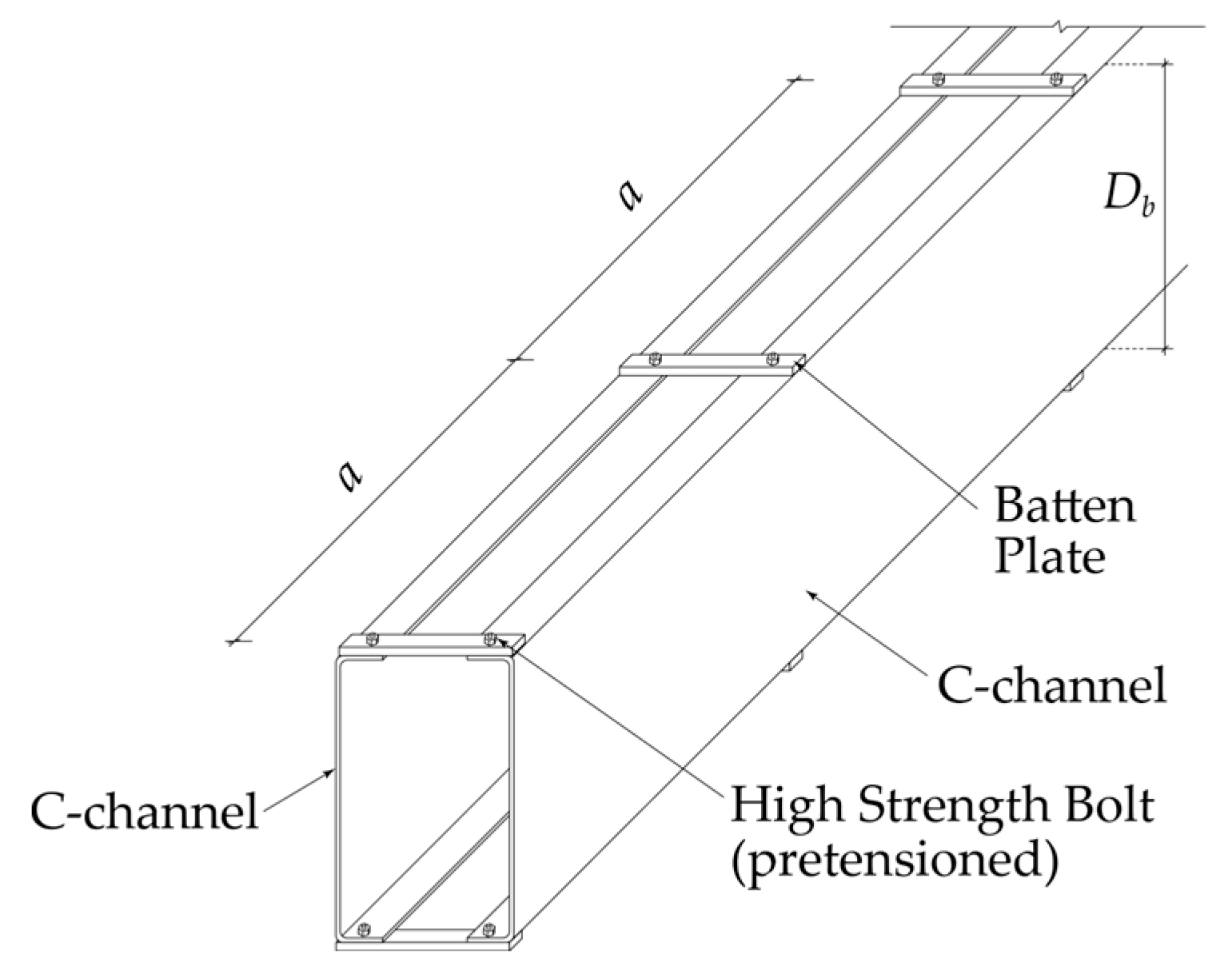
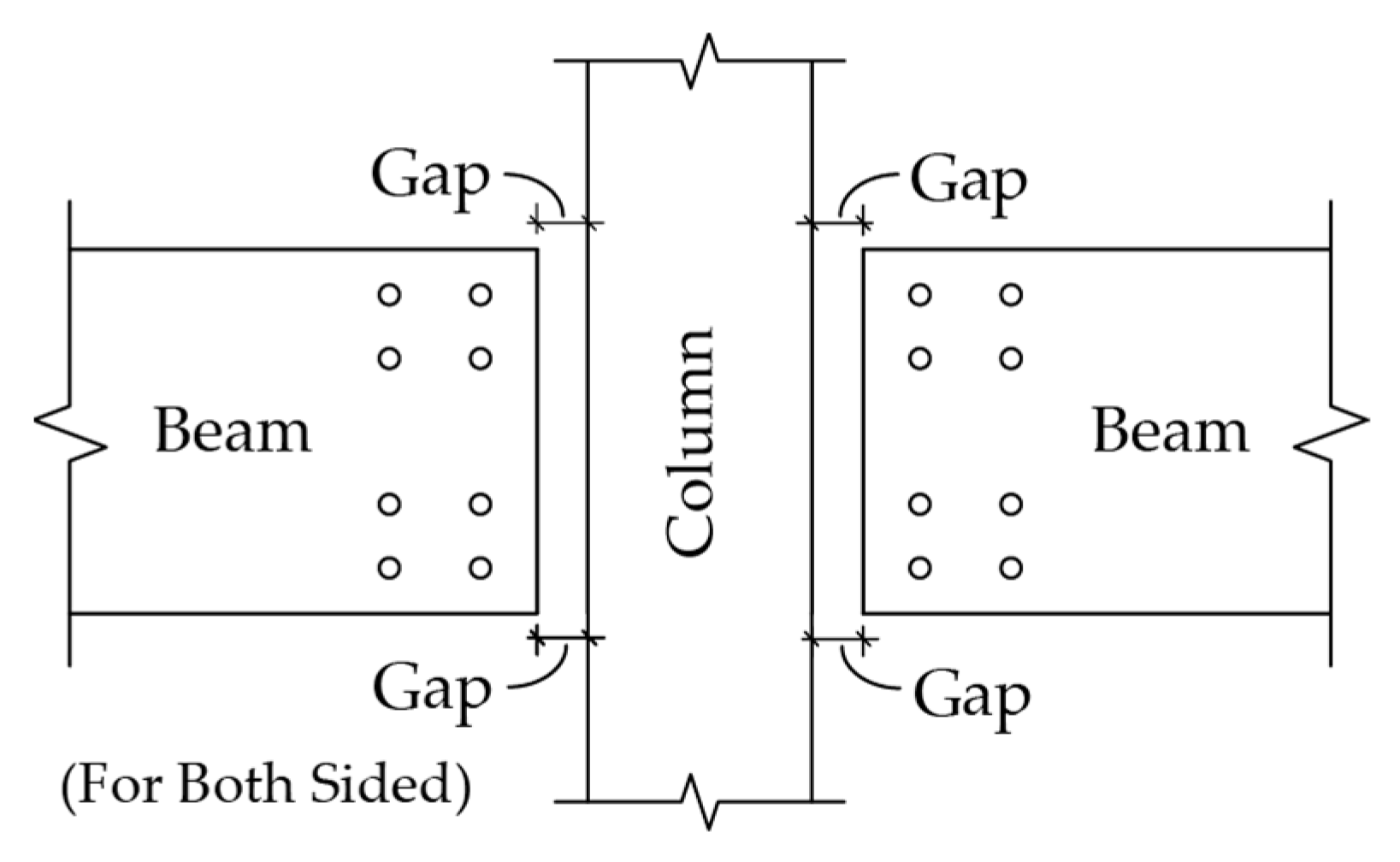
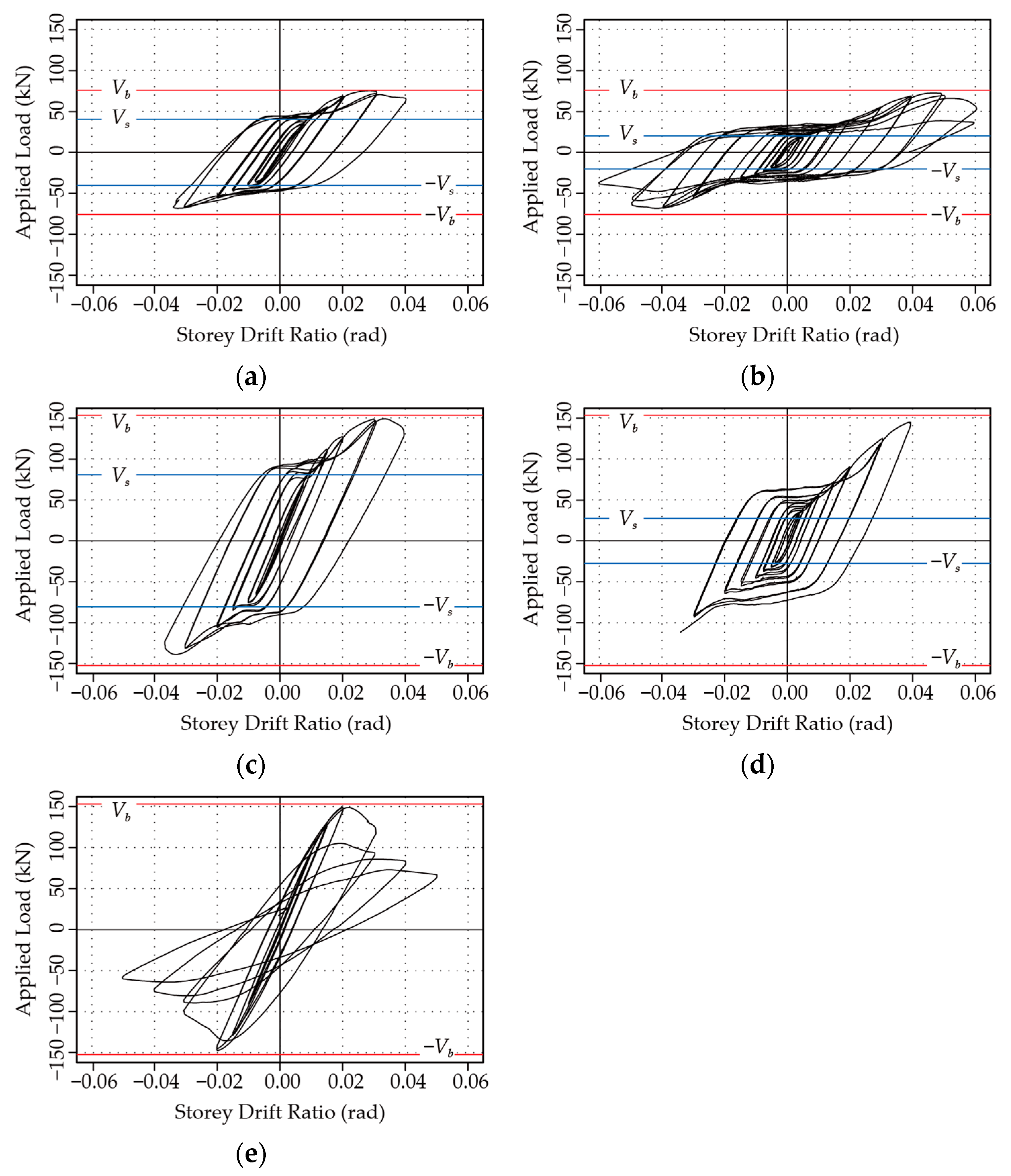


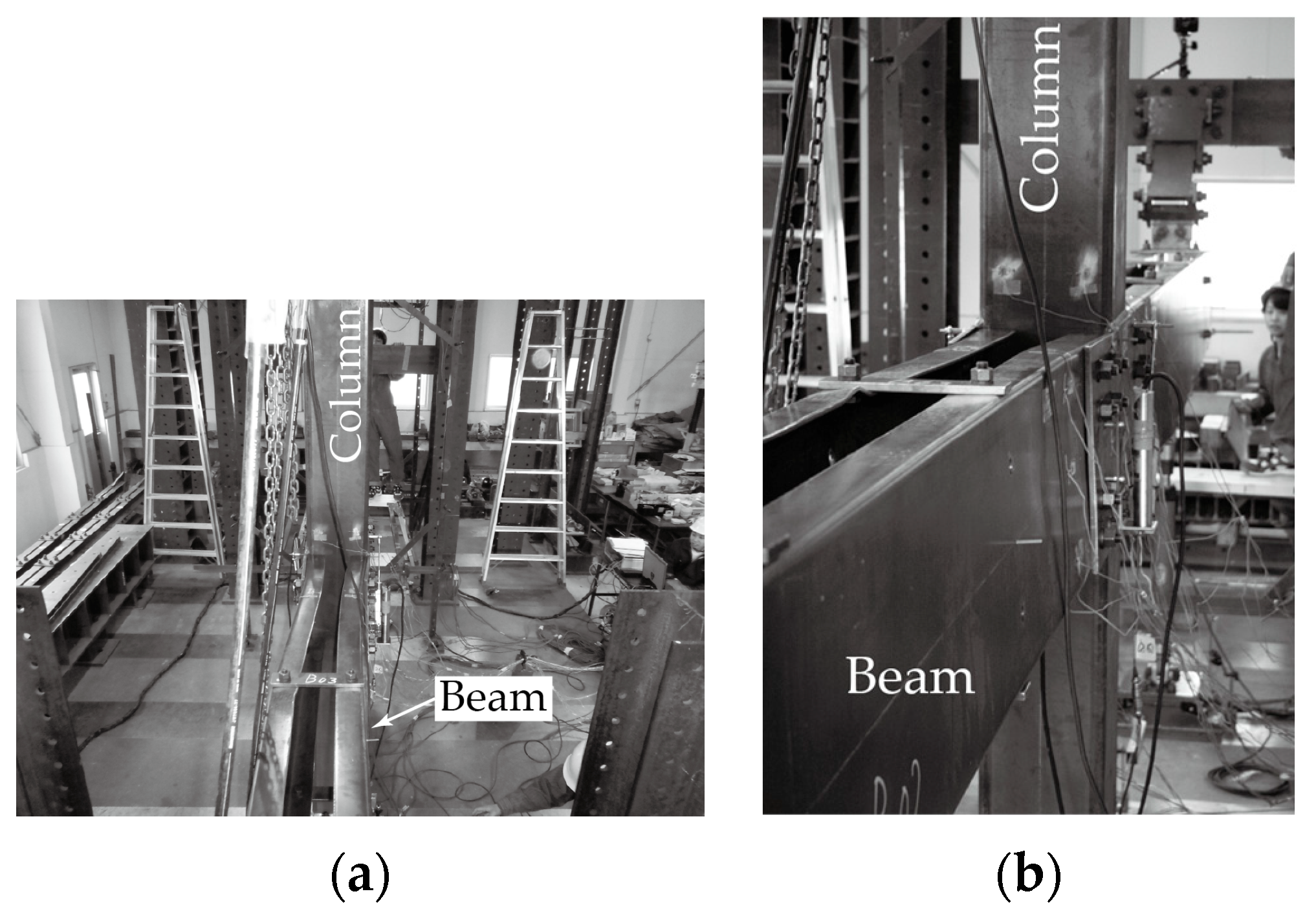

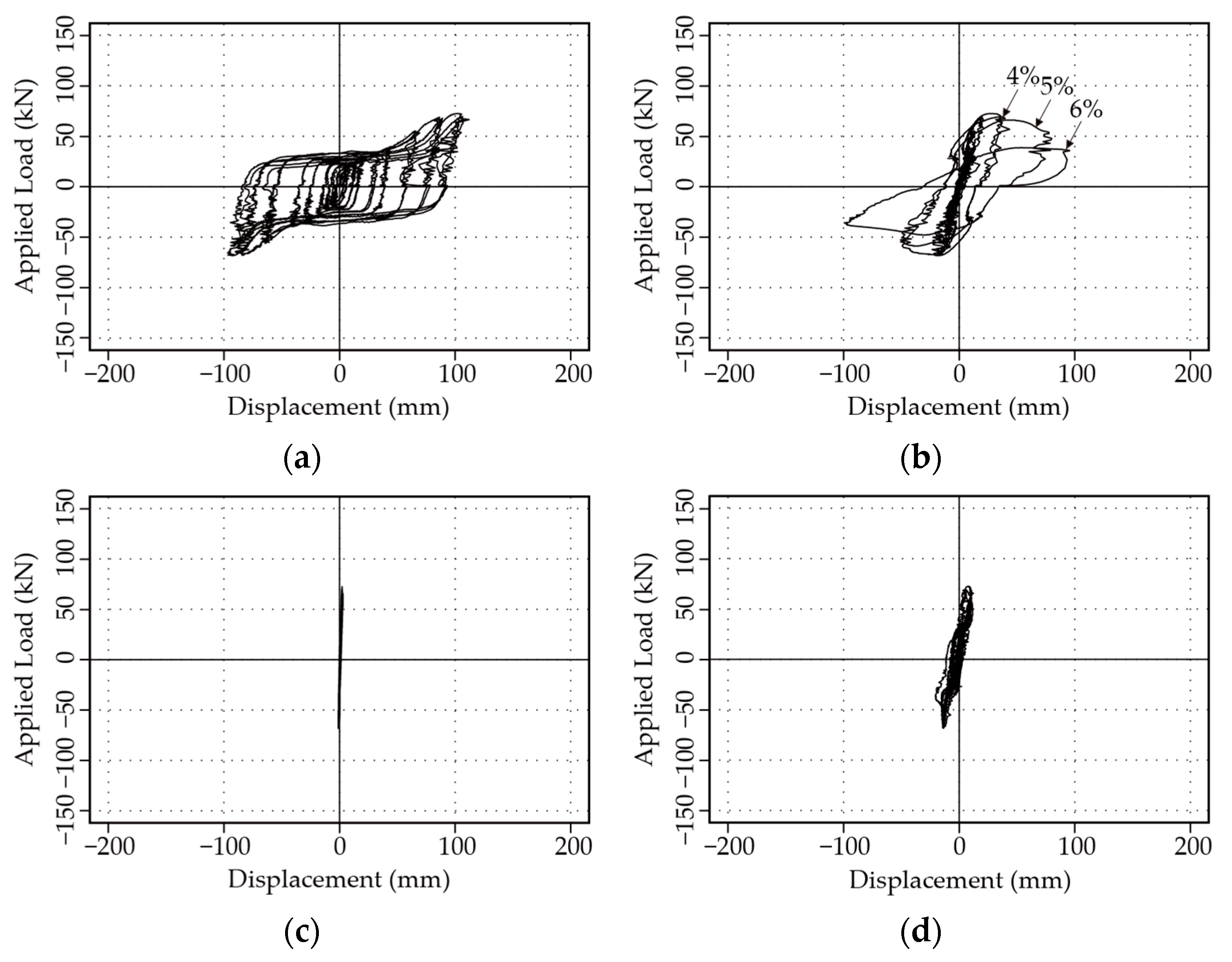

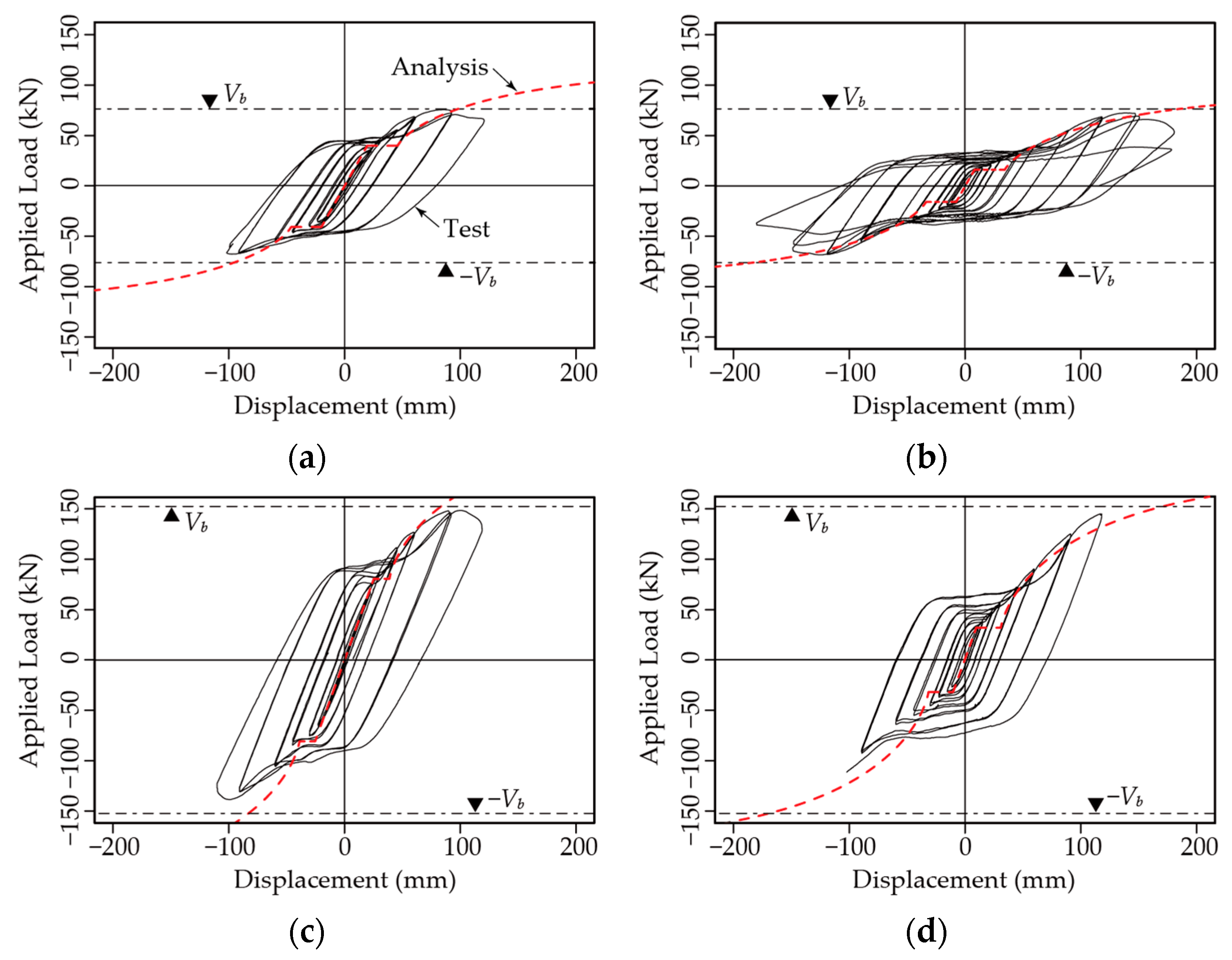

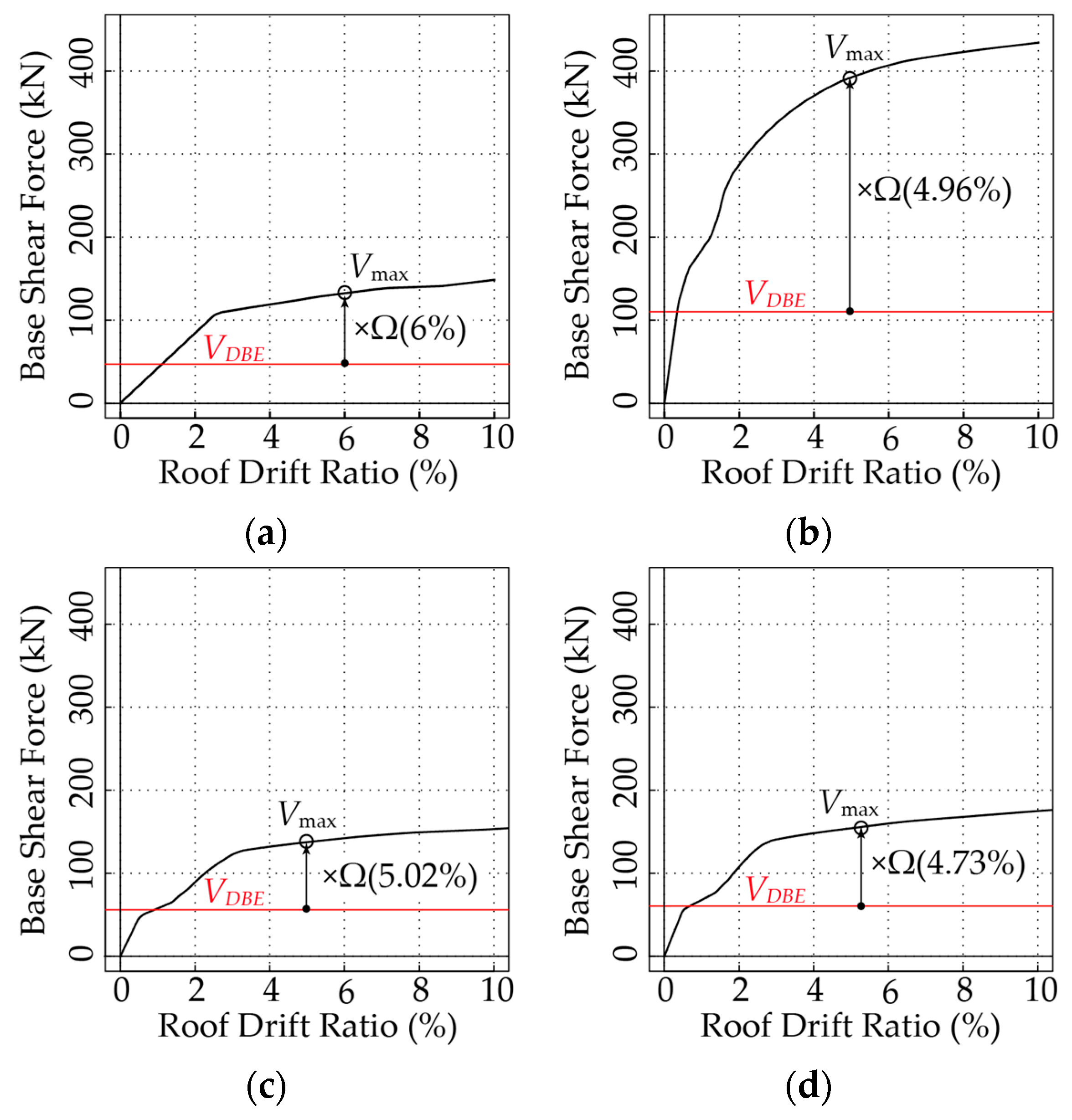
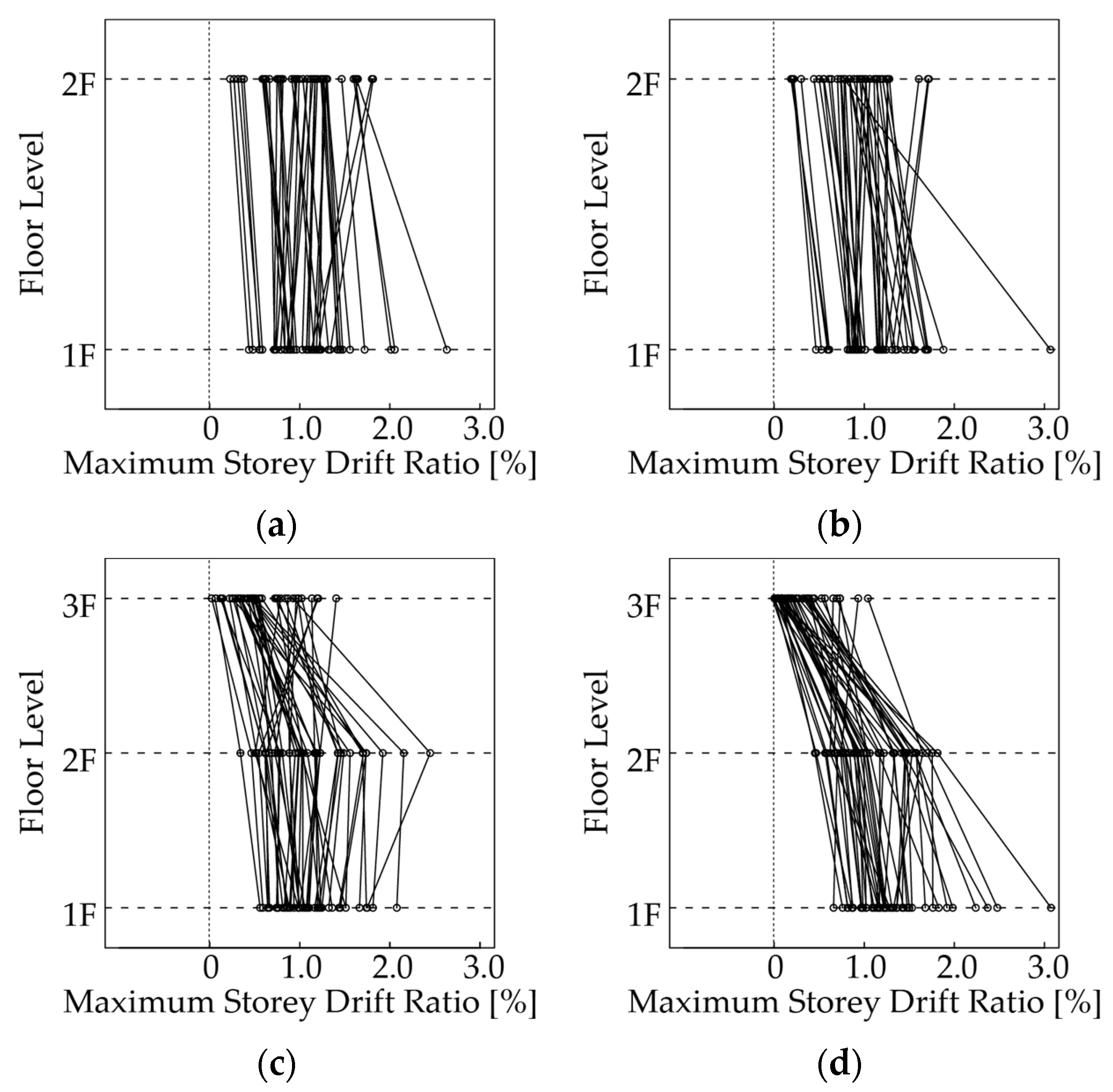
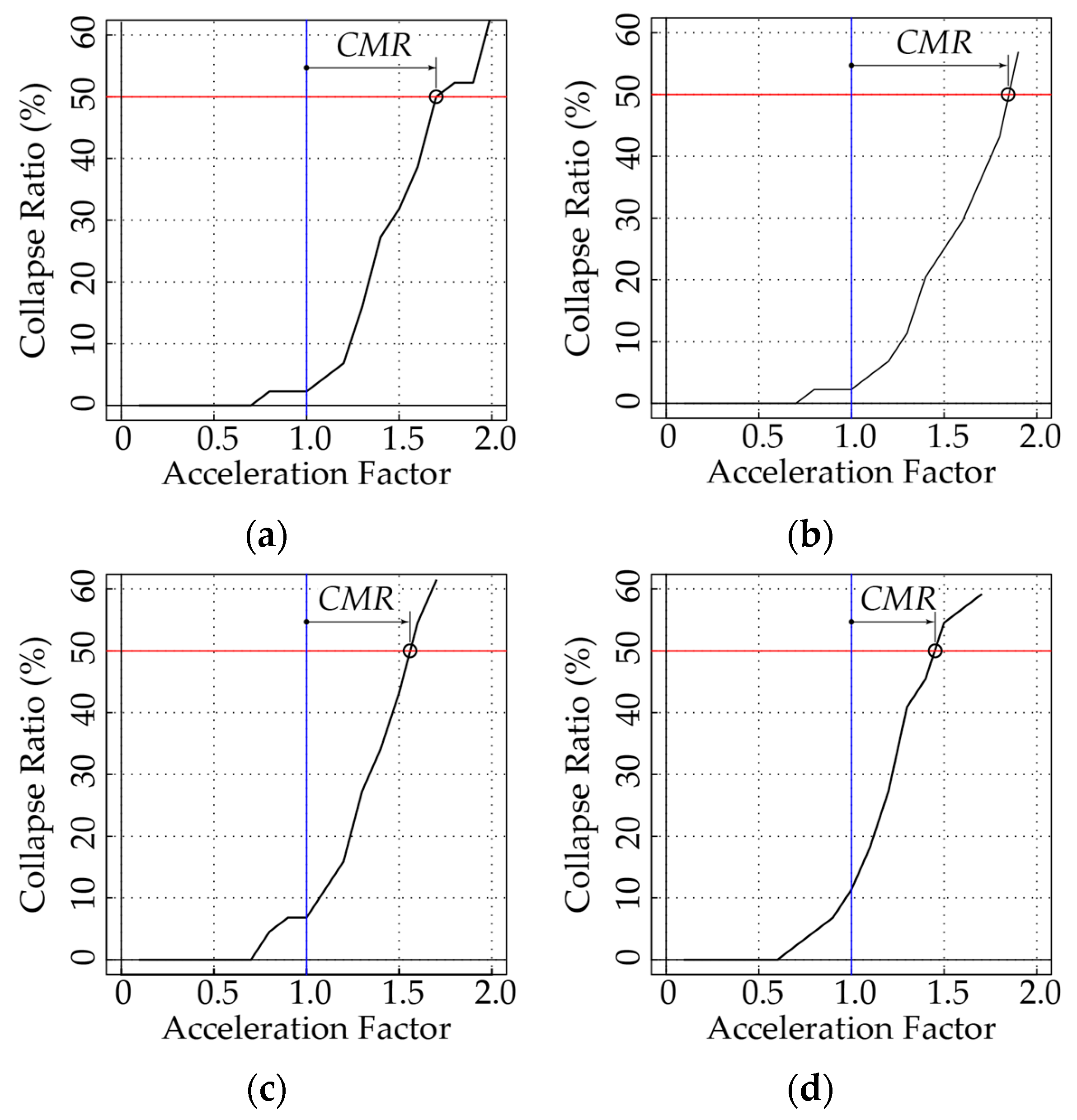
| No. | Name | Bolt Strength | Joint Type | Surface Class | Beam Location |
|---|---|---|---|---|---|
| 1 | OS_1 | F10T | PT 1 | A | One-Sided |
| 2 | OS_2 | ST 2 | |||
| 3 | BS_01 | PT | Both-Sided | ||
| 4 | BS_02 | ST | |||
| 5 | BS_03 | SHTB (F14T) | PT | B |
| Component | Thickness (mm) | fy (MPa) | fu (MPa) |
|---|---|---|---|
| Column | 9.21 | 384 | 431 |
| Beam | 5.58 | 353 | 447 |
| Connecting plate | 11.7 | 294 | 425 |
| Mechanism Load | OS_1 | OS_2 | BS_01 | BS_02 | BS_03 | |||||
|---|---|---|---|---|---|---|---|---|---|---|
| Load (kN) | Ratio (VX/Vs) | Load (kN) | Ratio (VX/Vs) | Load (kN) | Ratio (VX/Vs) | Load (kN) | Ratio (VX/Vs) | Load (kN) | Ratio (VX/Vs) | |
| Vs | 40.4 | 1.00 | 12.1 | 1.00 | 80.8 | 1.00 | 24.1 | 1.00 | 207 | 1.00 |
| Vb | 76.6 | 1.96 | 76.6 | 6.33 | 153 | 1.89 | 153 | 6.35 | 153 | 0.74 |
| Vp | 146 | 3.61 | 146 | 12.1 | 146 | 1.81 | 146 | 6.06 | 146 | 0.71 |
| Vc | 188 | 4.65 | 188 | 15.5 | 188 | 2.33 | 188 | 7.80 | 188 | 0.91 |
| Frame Name | Column (mm) | Beam (mm) | |
|---|---|---|---|
| S0202 | Box-300 × 300 × 6.35 | Regular: | 2-CS300 × 95 × 2.7 (lip d = 12.7) |
| Roof: | 2-CS280 × 95 × 2.3 (lip d = 12.7) | ||
| S0203 | Regular: | 2-CS405 × 95 × 2.3 (lip d = 12.7) | |
| Roof: | 2-CS356 × 95×1.9 (lip d = 12.7) | ||
| S0302T | Regular: | 2-CS356 × 95 × 1.5 (lip d = 12.7) | |
| Roof: | 2-CS254 × 95 × 2.3 (lip d = 12.7) | ||
| S0302 | Regular: | 2-CS356 × 95 × 1.5 (lip d = 12.7) | |
| Roof: | 2-CS300 × 95 × 1.5 (lip d = 12.7) | ||
| Response Modification Coefficient, R | System Overstrength Factor, Ω0 | Deflection Amplification Factor, Cd |
|---|---|---|
| 8.0 | 3.0 | 5.5 |
| Frame Name | S0202 | S0203 | S0302T | S0302 | Avg. of Ω |
|---|---|---|---|---|---|
| VDBE (kN) | 47.15 | 110.3 | 56.05 | 60.50 | |
| Vmax (kN) | 132.4 | 391.7 | 137.5 | 152.7 | |
| Ω | 2.808 | 3.552 | 2.454 | 2.524 | 2.835 |
| Frame Name | S0202 | S0203 | S0302T | S0302 |
|---|---|---|---|---|
| 1F | 1.226 (%) | 1.301 (%) | 1.141 (%) | 1.389 (%) |
| 2F | 1.146 (%) | 0.9087 (%) | 1.184 (%) | 1.219 (%) |
| 3F | - | - | 0.5977 (%) | 0.3595 (%) |
| Frame Name | Δmax | ΔDBE | K0 (×102 kN/rad) | Cd,cal (=Δmax/ΔDBE) |
|---|---|---|---|---|
| S0202 | 1.226 (%) | 0.304 (%) | 155.1 | 4.03 |
| S0203 | 1.301 (%) | 0.365 (%) | 302.2 | 3.56 |
| S0302T | 1.184 (%) | 0.498 (%) | 112.6 | 2.38 |
| S0302 | 1.389 (%) | 0.454 (%) | 133.3 | 3.06 |
| Avg. | 3.26 |
| Frame Name | S0202 | S0203 | S0302T | S0302 | Avg. |
|---|---|---|---|---|---|
| T1 (sec.) | 0.56 | 0.50 | 0.78 | 0.78 | |
| CMR | 1.69 | 1.85 | 1.56 | 1.45 | |
| SSF | 1.14 | 1.22 | 1.22 | 1.21 | |
| ACMR | 1.93 | 2.26 | 1.90 | 1.75 | 1.96 |
| Total Collapse Uncertainty βTOT | Collapse Probability of 10% ACMR10% | Collapse Probability of 20% ACMR20% |
|---|---|---|
| 0.525 | 1.96 | 1.56 |
Disclaimer/Publisher’s Note: The statements, opinions and data contained in all publications are solely those of the individual author(s) and contributor(s) and not of MDPI and/or the editor(s). MDPI and/or the editor(s) disclaim responsibility for any injury to people or property resulting from any ideas, methods, instructions or products referred to in the content. |
© 2024 by the authors. Licensee MDPI, Basel, Switzerland. This article is an open access article distributed under the terms and conditions of the Creative Commons Attribution (CC BY) license (https://creativecommons.org/licenses/by/4.0/).
Share and Cite
Sato, A.; Kitagawa, H. Seismic Design Procedure for Low-Rise Cold-Formed Steel–Special Bolted Moment Frames. Appl. Sci. 2024, 14, 4520. https://doi.org/10.3390/app14114520
Sato A, Kitagawa H. Seismic Design Procedure for Low-Rise Cold-Formed Steel–Special Bolted Moment Frames. Applied Sciences. 2024; 14(11):4520. https://doi.org/10.3390/app14114520
Chicago/Turabian StyleSato, Atsushi, and Honoka Kitagawa. 2024. "Seismic Design Procedure for Low-Rise Cold-Formed Steel–Special Bolted Moment Frames" Applied Sciences 14, no. 11: 4520. https://doi.org/10.3390/app14114520
APA StyleSato, A., & Kitagawa, H. (2024). Seismic Design Procedure for Low-Rise Cold-Formed Steel–Special Bolted Moment Frames. Applied Sciences, 14(11), 4520. https://doi.org/10.3390/app14114520






